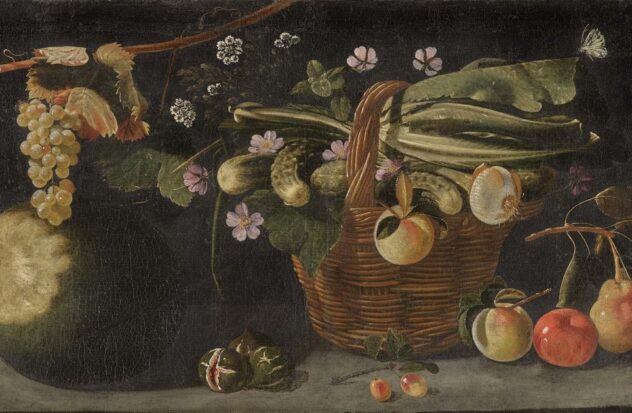MADRID.- He Meadows Museum at Southern Methodist University (SMU, Dallas) announced this Tuesday the acquisition of two construction of 17th-century women artists: a still life by Josefa de Ayala (c. 1630-1684) and a painted cell cross by María Josefa Sánchez (active between 1639 and 1652).
Both works were acquired with funds from the Meadows Foundation and will be on view in the Meadows galleries in the autumn. Together, the acquisitions reflect a vibrant artistic climate in the Iberian Peninsula that allowed women a certain freedom of expression.
“We are pleased to add these important works to our collection. This exquisite example of Ayala’s work showcases the artist’s masterful technique and ability to infuse still life compositions with both aesthetic beauty and deep symbolic meaning, while Sánchez’s poignant cell cross not only demonstrates her artistic skill but also highlights her role in shaping the religious expression and spirituality of the era,” said Meadows Museum Director Amanda W. Dotseth.
The works
These two paintings – the oldest known in the collection – join the growing number of works by women artists in the collection, which includes Luisa Roldán (1652-1706), Francisca Efigenia Meléndez y Durazzo (1770-1825), María Blanchard (1881-1932), Helen Escobedo (1934-2010) and Cristina García Rodero (born 1949).
Ayala’s painting presents a series of fruits, vegetables and flowers arranged on a dark shelf, a common device among still life painters active in Iberia, such as Juan Sánchez Cotán and Juan van der Hamen. Some of the fruits and vegetables included by Ayala have clear biblical and Christological connotations: the melon, onions and cucumbers that sustained the Israelites in the desert; the apple that makes its fateful appearance in the Book of Genesis; and the ripe grapes used to make the wine of the Eucharist.
Sánchez’s work, for its part, exhibits a style akin to that of Luis de Morales (1510/11-1586), whose art was widely disseminated through engravings. The composition is dominated by a crucified Christ, looking upwards and wearing a crown of thorns. His elongated limbs and expressive features evoke the Mannerist style. Blood flows from the wounds inflicted by the nails and from Christ’s forehead, and stains the immaculate loincloth. On either side of Christ, the arms of the cross bear representations of St. Francis of Assisi marked with the stigmata (left) and St. Anthony of Padua cradling the infant Jesus and holding the martyr’s palm (right).
Biographies
Josefa de Ayala (c. 1630-1684) –also known as Josefa de Óbidos, after the town in which she spent much of her life– was born in Seville before her family moved to her father’s native Portugal. Like many female artists of the time, Ayala was born into a family of artists and was trained by her father, the painter Baltazar Gomes Figueira.
He had close personal and stylistic ties with some of the most influential Sevillian artists, who very likely shaped his artistic development, such as Francisco de Herrera el Viejo (who was also Ayala’s godfather), Francisco de Zurbarán and Bartolomé Esteban Murillo, all of whom are represented in the Meadows collection.
During her lifetime she produced some 150 paintings, making her one of the most prolific artists of her time. Although little is known about her life, surviving archives show that she supplemented her income as an artist with property investments, suggesting that she enjoyed greater financial independence and success at a time when few women achieved such status.
In the case of María Josefa Sánchez, active between 1639 and 1652, probably in Castile, she specialized in the making of cell crosses, popular objects for private worship in Spain and Latin America. Although some have argued that Sánchez may have been a nun or a novice, the use of the word doña on her signed crosses suggests that she was possibly a noblewoman; despite the lack of documentation about her life, the existence of signed works indicates a certain level of recognition and prestige.
Source: Europa Press



